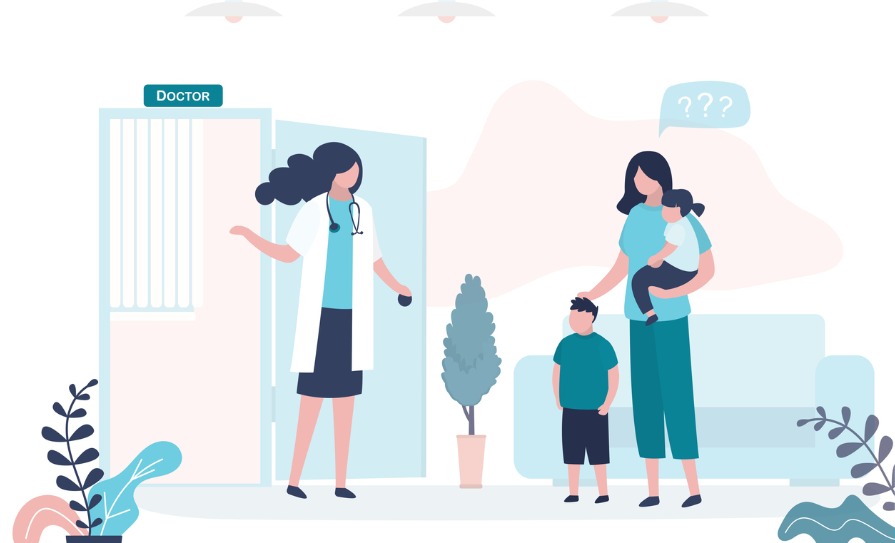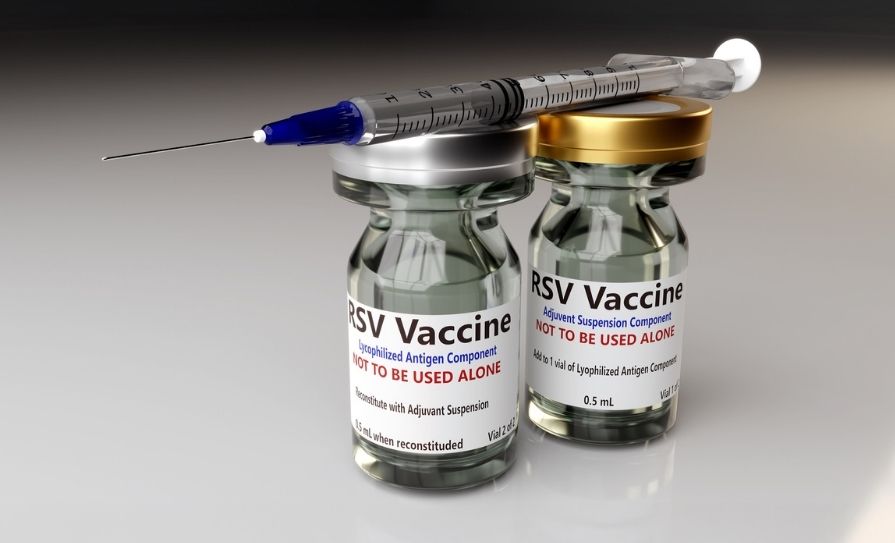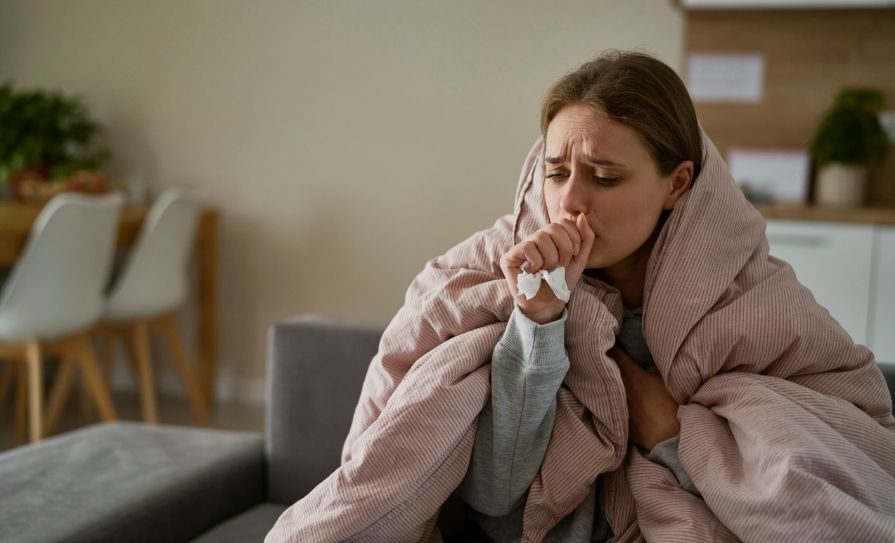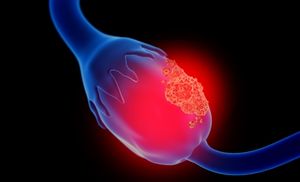This article explores the hypothesis that POTS is a possible sequelae to Covid-19 infection, as well as diagnosis and treatment strategies
Abstract
Postural tachycardia syndrome (POTS) is a chronic condition and subtype of dysautonomia that is characterised by orthostatic intolerance (OI) associated with multiple symptoms, including exaggerated tachycardia, dizziness, fatigue, loss of focus, and loss of consciousness upon standing. It frequently begins during early or middle adolescence and can affect children, adolescents, and adults alike. The identified precipitating factors behind POTS are physically stressful events including heavy exercise, infection, pregnancy, fever, surgery, or trauma. Comparing the demographical data, one-in-100 teenagers is thought to be affected by POTS. Young women, typically younger than age 35 years, are most likely to experience it. However, there is a lack of scientific data from the Irish population that may underestimate the real prevalence of POTS diagnosis after the Covid-19 pandemic. Furthermore, there is a dire need for a multidisciplinary framework pertaining to clinical examinations and management of POTS in the Irish paediatric population. There is a strong consensus that this condition requires a multidisciplinary skillset and assessment in order to identify the reason behind this condition and administer symptom-appropriate treatment in time. The heterogeneity of the essential pathophysiology and the variable response to symptoms make POTS a difficult condition to narrow down towards the respective non-pharmacological and pharmacological interventions. This literature review explores the evidence-based guidelines that narrate the factors that may add to the signs and symptoms of POTS as possible sequelae to Covid-19 viral infection.
POTS is a chronic form of OI, a condition characterised primarily by the symptoms of pre-syncope without any substantial change in blood pressure in an upright position in presenting cases. The presenting complaints of POTS range from cardiac, ie, expansion in pulse and dizziness on standing, loss of consciousness, chronic fatigue, and non-cardiac symptoms including increased sympathoexcitation, ie, chest tightness, palpitations, inappropriate vasomotor skin changes, excessive sweat, and frequent tremulousness.
OI is believed to be physiologically associated when the whole volume of blood returns to the heart after an individual stands up from a resting position.
The diagnostic criteria of POTS varies among children and teenagers. For establishing POTS diagnosis through the active standing test, there should be the simultaneous presence of OI along with a normal supine heart rate (HR). Additionally, during the first 10 minutes of this particular test, HR may rise by at least 40 beats per minute (bpm), with a maximum HR of 130bpm for children aged six-to-12 years, and >125bpm for adolescents aged 13-to-18 years associated with the symptoms of light-headedness. Another diagnostic test usually performed by paediatricians is the ‘passive head-up tilt test (HUTT)’, which may show a decline in systolic blood pressure (SBP) of more than 20mmHg or a decline in diastolic blood pressure (DBP) of more than 10mmHg without any existing orthostatic hypotension.
Different paediatricians employ different criteria and definitions of OI and POTS, but these are the only published criteria that are used internationally. But it has been quantified that OI is highly associated with age, making it most common among adolescents. In some cases, the association of POTS relates to the genetic predisposition of orthostatic OI exaggeration. In the US, this heterogeneous group of symptoms has been labelled as ‘adolescent autonomic dysfunction’ making it easier for paediatricians to assess the patient clinically. Although the adult criteria for diagnosing POTS has been adopted by paediatricians, little is known about the pathogenesis of POTS in children and adolescents. A study, conducted in the US among high-school students, suggests an increase in HR without any OI by 48bpm.
The advent of Covid-19 and POTS as potential side-effects in this population may affect multiple systems in the body; negatively impacting long-term quality-of-life among the paediatric population. Therefore, this article argues for the use of individualised care plans for patients based on their isolated pathological conditions.
Risk factors for POTS
POTS always presents with very common signs and symptoms that can be very difficult to track down to the diagnosis of the condition itself. The set of published risk factors among children and adolescents differs from adults. The most commonly-identified risk factors in the above-mentioned population are the rate of increase in the supine HR, the number of sleeping hours, and the amount of water intake. One of the landmark studies published on this quantified that they can be used in predicting the incidence of POTS. The study suggests if the supine HR was faster by 10 beats/min, the risk of suffering from POTS was increased by 1.583 times. Water intake (less than 800ml/day water) with less than eight sleeping hours /day were strong predictors of POTS. Recent data shows that patients who recovered from Covid-19 infection also tend to experience POTS as a potential side-effect.
Literature review
This paper gathers information from open-source scientific portals, such as PubMed and Psych Info, the Irish Health Respiratory Lenus, and Google Scholar. While finding more accuracy in related information, different online resources were also utilised, such as Cambridge University, Dysautonomia International, NINDS Institute, UpToDate, and Press University. These websites were studied to get a broader view of all the aspects of the diagnosis of POTS. All included studies and references are in the English language.
Perspectives on the pathogenesis of POTS
The pathophysiology of POTS is not fully known. Recent perspective evidence on the pathogenesis of POTS in children and adolescents has been classified into impaired central blood volume, atypical autonomic reflexes, elevated sympathetic tone, abnormal skeletal muscle pump function, local vascular tension regulation dysfunction, iron insufficiency, mast cell activation, and autoimmune dysfunction.
(a) Impaired central blood volume: Many paediatric POTS patients have been reported with reduced blood volume or decreased red blood cell volume. The 24-hour sodium excretion in urine was confirmed to be an effective biomarker of the body’s volume capacity in 1996 by El-Sayed and Hainsworth. According to some researchers, the severity of paediatric POTS hypovolaemia is correlated with the tachycardic response to standing, and symptoms are alleviated by either an acute or chronic increase in plasma volume. Supplementing with salt and water helps paediatric POTS patients with their uncomfortable symptoms when their 24-hour urine sodium excretion is less than 124mmol/24 hours. In the supine posture, the blood flow to the lower extremities was measured. The vast majority of these patients belonged to the low flow POTS (LFP) group.
(b) Atypical autonomic reflexes and impaired cognitive function: When orthostatic stress is applied, persons with POTS show increased blood volume accumulation in the lower limbs and visceral circulation compared to non-POTS people. This causes a clear reduction in blood volume in venous return to the heart and subsequent cardiac ejection. However, certain young people with POTS who have a ‘hyperadrenergic’ genetic background are unable to buffer the decline in baroreceptor activation, which results in chronic sympathetic excitement, which is characterised by continuous tachycardia when standing up. The primary biochemical alteration in hyperadrenergic POTS patients is an increase in plasma norepinephrine in the standing position. In children with POTS, elevated plasma norepinephrine may indicate that the norepinephrine transporter (NET) is not functioning properly. The likelihood of POTS increases 5.9 times in children and adolescents if sleeping hours are less than eight hours per day. More than 70 per cent of children with POTS express dissatisfaction with sleep hygiene. Therefore, excessive sympathetic system activation may be a contributing factor to the hyperarousal state and affect the sleep quality and cognitive functions in POTS patients.
(c) Abnormal skeletal muscle pump function: Typically, skeletal muscle pumps’ control of the lower limb muscles ensures that there is enough venous return to the heart to prevent OI. Stewart et al measured venous volume, peripheral blood capacitance, and calf muscle pump activity in 12 LFP participants, 10 healthy controls, and seven normal flow POTS (NFP) patients. They discovered that in LFP participants, the lowered calf circumferences were related to a lower percentage of the calf’s venous volume that was emptied during muscle contraction, together with a generally low blood flow. They postulated that the decreased calf blood capacity may have decreased calf muscle size in the LFP group and harmed the skeletal muscle pumps’ ability to discharge blood vertically, further lowering blood flow and ultimately causing OI in these individuals.
d) Local vascular tension dysfunction and abnormal vasoactive factor release: Increased blood fills the capacitance vessels under elevated tension, which is followed by a decrease in venous return. Along with NO, hydrogen sulphide (H2S) is a gasotransmitter that causes blood vessels to constrict or relax depending on the gas concentration. Additionally, plasma sulfur dioxide levels were positively correlated with the highest HR of all research participants and were noticeably greater in children with POTS than in normal participants. The three elevated endogenous gaseous molecules in children with POTS provide evidence in favour of the theory that excessive vasorelaxation may play a role in the pathophysiology of paediatric POTS. Serum resistin, an adipocyte-derived peptide hormone, has been shown to significantly increase vasoconstriction and decrease diastolic function.
e) Iron insufficiency: Iron can reduce vasodilation by impeding NO’s manufacture, transportation, transformation, and signalling. Adolescents with POTS had low ferritin and vitamin D levels. Paediatric POTS patients in the US are more likely to have low iron stores and moderate anaemia than healthy adolescents. Furthermore, iron deficiency anaemia in children and adolescents results in an increase in NO production, which raises the possibility that low iron storage-induced excessive vascular relaxation brought on by an increase in NO output could be a potential pathophysiological factor in paediatric POTS. Additionally, paediatric POTS patients had higher mean corpuscular volume and lower mean corpuscular haemoglobin concentration (MCHC) values than controls, which may be related to lessened iron storage.
(f) Mast cell activation (MCA): Shibao et al’s evaluation of teenage girls with POTS revealed that some of them experienced flushing episodes linked to OI, indicating that MCA is probably involved in the hyperadrenergic mechanism for POTS. Mast cell production of histamine, adenosine, platelet-activating factor, and prostaglandins may be significant in adolescents with POTS-related vasodilation and tachycardia, despite the paucity of data on the specific mechanisms of MCA in POTS. Blocking these mediators in paediatric POTS patients with MCA might be a potentially helpful treatment, and this needs further study.
(g) Autoimmune dysfunction: Due to the frequent discovery of autoantibodies in patients, autoimmune disturbance has been hypothesised to be one of the causes underlying POTS. The serum of young POTS patients included 29 per cent anti-ganglionic nicotinic acetylcholine receptor (gAChR) 3 and 4 antibodies, according to a study from Japan that used the luciferase immunoprecipitation system method. In POTS patients, anti-gAChR antibodies may impair autonomic ganglionic synaptic transmission, contributing to dysautonomia.
According to one study, POTS patients had higher levels of autoimmune markers than the general population, including higher levels of the antinuclear antibody (25 vs 16 per cent) and antiphospholipid antibody (7 vs 1 per cent). They also had a higher incidence of comorbid autoimmune diseases, including Hashimoto thyroiditis, rheumatoid arthritis, systemic lupus erythematosus, and common variable immunodeficiency. The aforementioned data show that autoimmune dysfunction underlies paediatric POTS, but further research is needed to understand the precise immunological pathways involved and assess the therapeutic relevance.
Post-Covid-19 POTS
Recently, there is an upsurge in POTS diagnoses as a sequence of Covid-19 infection. Literature quantifies that 2-to-14 per cent of post-Covid-19 patients develop POTS and 9-to-61 per cent experience POTS-like symptoms. Ultimately, expanded retrospective and prospective studies are needed to further explore and characterise the mechanisms and spectrum of autonomic dysfunction related to Covid-19, its long-term natural history, and its management.
Prevalence and clinical presentation
An international survey of 3,762 recovered Covid-19 patients reported that 30 per cent experienced chronic tachycardia after infection (n=1,680), with heart rate increased by more than 30bpm when they stood up. In addition, a meta-analysis of 47,910 recovered Covid-19 patients (Lopez-Leon, et al ) aged 17-to-87 years indicated that 80 per cent have at least one long-lasting symptom between 14 and 110 days after the virus infection. These include 58 per cent fatigue, 44 per cent headaches, 27 per cent cognitive impairment or brain fog, 24 per cent dyspnoea, 11 per cent tachycardia and palpitations, and 10 per cent impaired exercise tolerance, which are all typical symptoms of POTS. In fact, it was proposed that infection-related orthostatic intolerance is more common after Covid-19 infection than after any other viral infection in a retrospective case analysis of SARS-CoV-2-infected patients who underwent autonomic testing.
Management of post–Covid-19 POTS
There is a strong argument that until additional information is available on whether treating post-Covid-19 POTS requires different management guidelines, current POTS guidelines should be followed. The American Heart Rhythm Society advises using non-pharmacological interventions as first-line management while pharmacological intervention should always be the second-line treatment option. Increased salt (10-12g/d) and fluid (2-3L/d) intake are standard non-pharmacological treatment options, as are avoiding prolonged standing and dehydration, wearing compression socks, and taking physical counterpressure measures. It should be highlighted that some patients with post-Covid-19 dysautonomia and POTS have reported post-exertional malaise, exercise intolerance, and persistent fatigue, despite the fact that increased activity has been recommended in some lengthy Covid-19 therapy guidelines.
Following are the evidence-based mixed strategies to manage post-Covid-19 POTS cases:
- Low dosage of beta-blockers, rehabilitative reconditioning, and cognitive behavioural therapy (CBT) resulted in the complete remission of symptoms.
- The use of ivabradine and increased salt and fluids use has been proven to reduce orthostatic symptoms and tachycardia.
Due to the frequent
discovery of autoantibodies in patients, autoimmune disturbance has been hypothesised to be one of
the causes underlying POTS
Strategies for POTS management in children and adolescents – as a separate diagnosis
Full recovery of POTS in children and adolescents needs collaborative and multidisciplinary strategies, but it is difficult to treat patients because of inconsistent and poor therapeutic efficacies. After the establishment of the diagnosis of POTS, healthcare professionals may need to educate the patients about preventive non-pharmacological treatment, ie, avoidance of strenuous exercise, adequate water consumption, avoidance of certain foods, sleeping hours management, etc, before moving on to pharmacological interventions.
(a) Non-pharmacological interventions
Among non-pharmacological management interventions for child and adolescent POTS, patients are advised not to take certain drugs such as NET inhibitors or 5-hydroxytryptamine norepinephrine reuptake inhibitors.
Several studies show that exercise training can improve symptoms and quality-of-life and is even better than propranolol in the recovery of upright haemodynamics and the normalisation of renal–adrenal reactivity. Children and adolescents with POTS, especially those with 24-hour urinary sodium excretion <124mmol or a BMI <18kg/m2, are encouraged to drink adequate amounts of water (>800mL/d) and increase appropriate salt intake for one-to-three months to increase blood volume. However, people with kidney disease, high blood pressure, or heart failure are advised not to follow this regimen.
The symptoms of POTS are inextricably linked to an upright posture, so patients should avoid prolonged periods of standing, abrupt head-up postural shifts, and high normal temperatures, especially in covering situations. A moderate exercise programme to increase limb muscle pump function and autonomic nervous system activities to improve autonomic tone is recommended by the evidence. To lessen the strain of standing on children’s hearts, exercises that entail non-upright positions including swimming, recumbent cycling, and rowing machines are used. Children with POTS whose modified QTcd is greater than 43ms are advised to perform these exercises. It is recommended that patients begin by standing in front of a divider with their feet 15cm away from it for five minutes per day, gradually increasing to 20 minutes per day depending on their obstruction and propensity. Oral rehydration salts (ORS) for one-to-three months or recognition of passing intravenous saline as a rescue treatment for patients with clinical decompensation and basic deterioration signs are recommended for paediatric POTS patients who are unmistakably connected with having hypovolaemia or lacking salt confirmation.
b) Pharmacological interventions
- Patients who have known cases of POTS should use ORS for one-to-three months.
- Saline administration can alleviate ‘hypovolaemic’ patients instantly.
- It has been demonstrated that a variety of indicators, including decreased MCHC values, 24-hour urine sodium excretion 124mmol, and a cut-off of BMI 18kg/m2, can predict the therapeutic efficacy of ORS on children and adolescents with POTS.
- Additionally, after oral iron therapy, increased no production and raised no concentrations in adolescents with iron-deficiency anaemia can revert to normal, indicating that iron supplementation can be helpful for POTS patients with iron deficiency and the ensuing vasorelaxation status.
- Non-selective adrenoceptor blockers for alpha and beta receptors and adrenoceptor blockers with a higher selective affinity for alpha receptors than for beta receptors can be classified as adrenoceptor blockers.
Conclusion
There has been a significant increase in the incidence of POTS because SARS-CoV-2 is an acute viral infectious trigger. Similar to non-Covid-19-related POTS, orthostatic tachycardia and dysautonomia symptoms can be managed with HR-lowering medications and dietary changes. In order to address both the patient’s physical and emotional health, treatment teams should be interdisciplinary. In summary, a patient’s treatment strategy should be customised to their symptoms and almost certainly involve both medication and lifestyle changes. Furthermore, additional investigation into this escalating public health issue is required in order to properly comprehend and treat patients with post-Covid-19 POTS.
References on request













Leave a Reply
You must be logged in to post a comment.